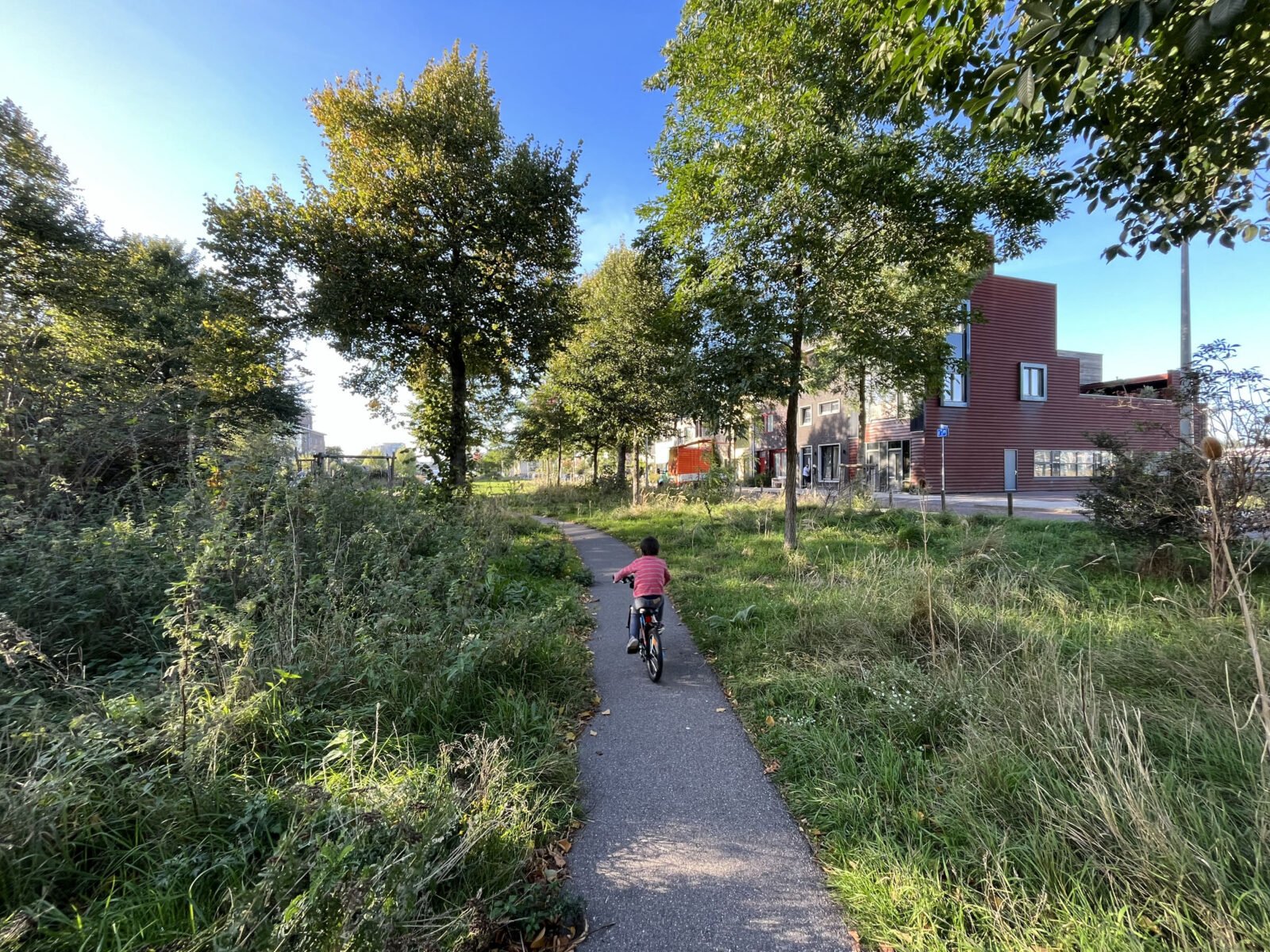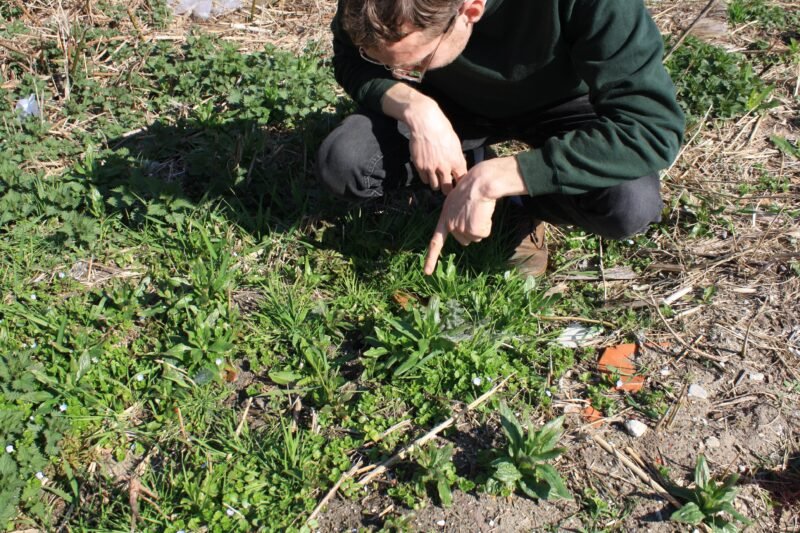Why We Could All Use Some More Vitamin G
Sociologist Jolanda Maas has been researching the positive effects of greenery on our health for years. Her plea for more vitamin G in the residential environment is more important than ever at a time when urban green spaces are disappearing and (mental) well-being is declining. How can housing ambitions go hand in hand with the need for more greenery and a healthier living environment?

More Green, Less GP
Discussions about the need for more green in the living environment quickly turn to topics such as climate adaptation and promoting biodiversity. For some years now, there’s also been an increasing focus on the relationship between greenery and our health. People who live in an environment with lots of greenery suffer less from mental problems and make fewer visits to the GP, it has now been proven. Sociologist Jolanda Maas, senior researcher at the Clinical Psychology section of the Free University in Amsterdam, has been researching the healing effects of nature on all kinds of target groups — from children to people with mental health problems — in living, working, learning and care environments since 2005. Her work in this relatively young field also finds international resonance.
“In greener living environments, depression, diabetes, ADHD, migraines, high blood pressure and premature births are less common”
Jolanda Maas
The Healing Effect of Green
If we want to keep healthcare costs manageable in the future, we cannot escape paying more attention to prevention. Greening the living environment contributes to this. Studies show that in green living environments depression, anxiety disorders, diabetes, ADHD, migraines, high blood pressure and premature births occur less often. Maas: “A few years ago, KPMG calculated that in the Netherlands we could save €65 million a year in healthcare costs and €328 million in labour costs if we created just ten per cent more green space. In the United States, researchers compared the healthcare costs of people living in the ninety per cent greenest environments with those living in the ten per cent least green environments. People who lived in the greenest environments spent €380 less per year on healthcare costs. In short, investing in green pays off.”
A strong argument for using greenery is that greenery promotes health in several ways. First, greenery has a direct effect on our brain. Just looking at greenery creates positive emotions and helps reduce stress. Green can also positively influence our lifestyle: people with more greenery in their neighbourhood exercise more, experience more social cohesion in the neighbourhood and sleep better. Exposure to a variety of trees and plants additionally strengthens our immune system, as they secrete bacteria and essential substances that can enrich the human microbiota. Finally, a green environment dampens environmental nuisances: it provides shade, reduces heat stress, muffles noise and reduces air pollution – if applied in the right place. “There are few other modifications you can do in the residential environment that can have such a broad effect on health and healthy behaviour,” says Maas.

The Battle Against Low Maintenance Greenery and Tile Gardens
You can apply greenery in many different ways. If you are building a residential area where many children will grow up, it is good to develop a piece of undefined green space where children can create their own play. In a neighbourhood for the elderly, benches in the green space are important. But it is not just about the presence of lots of greenery, Maas stresses. The quality of greenery determines the effect on our health and the quality of life in the neighbourhood. “This is why I find an initiative like Carefree Green interesting. A partnership of landscaping companies and garden and landscape architects, commissioned by local authorities, is laying green spaces and flowerbeds with much more variety than we were used to until recently.” So no grass and boring standard shrubs (the ubiquitous pubic greenery, ed.), but much better thought-out planting that is beautiful all year round, contributes to biodiversity and meets the needs of local residents. The effects are positive. “Before, people used to dump their rubbish in the greenery, now they take care of it. Cars are now neatly parked next to the greenery, instead of half in it.”
Maas worries about greenery in Dutch residential environments. “When I look at new housing estates, I see a lot of houses being delivered without a front garden. In a study on the green qualities of eighty neighbourhoods in the Netherlands, we concluded that streets with front gardens made a much greener impression. Not only that: because greenery requires maintenance, people with a front garden are outside more often, which in turn is good for social cohesion.” Nevertheless, the infamous tile garden seems to be gaining popularity. Many municipalities are now tackling the phenomenon through public campaigns and even tiling quotas. “My parents knew all the plants by name, younger generations no longer do,” says Maas. “Unknown makes unloved, so people buying starter homes now are more likely to choose to pave their gardens. The question is how to make sure that people start enjoying having a green, biodiverse garden again. Perhaps we should explore whether there can be more legal requirements around landscaping. New homes must now be built energy-neutral. Why couldn’t we also include provisions for green landscaping? In which case we would have to think carefully about maintenance.”

“In addition to energy-neutral homes, shouldn’t we also strive for legal requirements for green living environments?“
Jolanda Maas
Just how much green is green enough? “Wageningen researcher Cecil Konijnendijk came up with the so-called 3-30-300 rule: from your house you should be able to see at least three trees, a neighbourhood should have at least thirty per cent green cover and there should be a green recreational area within three hundred metres walking distance.” This is where the shoe pinches, as the amount of green space per inhabitant has been declining for years in Dutch cities and towns. In Amsterdam, for instance, between 2003 and 2016, almost five hundred football fields of green space disappeared in favour of construction. So should we expand instead of infill anyway? “There is a link between living in high-urban environments and psychological complaints. Therefore, there is quite a bit to be said for building in meadows, if this preserves the greenery in the centres.”
According to Maas, you’re not there with just creating greenery. “If you add greenery to an environment, it is not self-evident that people will start using it automatically. You have to offer a programme to give people a reason to be in green spaces. Gardening, for example, or exercise routes, or fruit trees. That way, you build a bond between people and nature and increase the likelihood of people visiting green spaces more often.”

Green as a Soft Value
A roof with solar panels pays for itself. So does a green street, but the arithmetic is much harder to do. “Green is a soft value, which makes it harder to properly value its importance. Moreover, the benefits of green often do not reach the investor.” As a result, greenery is regularly an underserved issue for both house builders and governments. “At the same time, home builders do have a responsibility for their customers’ residential enjoyment and health. We see that interest in greener living environments is increasing now that many people realise that greenery can make a positive contribution to promoting biodiversity and climate resilience.” Maas is therefore also hopeful for the future: “In 90 years, and hopefully much earlier, nature-inclusive construction will be the standard. When new homes and neighbourhoods are built, the role healthy, biodiverse and climate-resistant greenery can play will then also be considered from the outset to ultimately improve the health of mankind and the planet.”





